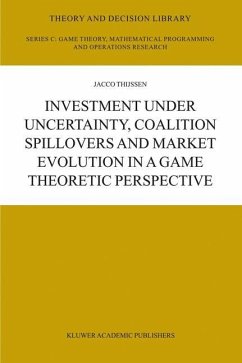
Multimarket Contact and Organizational Design

PAYBACK Punkte
0 °P sammeln!
The influence of market structure on competition and firms' behaviour is explored in economic theory since decades. Until recently, the focus was on the structures within one single market, in which decisions of firms were taken by one single decision maker. However, due to the globalization and integration of markets and the diversification of firms a more comprehensive approach is necessary.Silke Neubauer analyses the implications of multimarket contact and organizational devices for market strategies and market results within a game-theoretic framework. The focus is on delegation possibilit...
The influence of market structure on competition and firms' behaviour is explored in economic theory since decades. Until recently, the focus was on the structures within one single market, in which decisions of firms were taken by one single decision maker. However, due to the globalization and integration of markets and the diversification of firms a more comprehensive approach is necessary.
Silke Neubauer analyses the implications of multimarket contact and organizational devices for market strategies and market results within a game-theoretic framework. The focus is on delegation possibilities, pre-commitment and internal structures in (multi-stage) games without repetition. The impact of (dis-)economies of scope and delegation on the sustainability of multimarket collusion is analysed in the framework of an infinitely repeated game.
Silke Neubauer analyses the implications of multimarket contact and organizational devices for market strategies and market results within a game-theoretic framework. The focus is on delegation possibilities, pre-commitment and internal structures in (multi-stage) games without repetition. The impact of (dis-)economies of scope and delegation on the sustainability of multimarket collusion is analysed in the framework of an infinitely repeated game.












